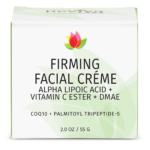Carrageenan
Carrageenan is a natural substance extracted from red seaweed and commonly used in the food industry as a thickener, emulsifier, or stabilizer. Named after a region in Ireland where it was traditionally harvested, Carrageenan is often found in dairy products such as ice cream, yogurt, and cottage cheese, as well as non-dairy alternatives such as almond milk. It helps to improve the texture and consistency of these products. Despite its widespread use, there’s ongoing debate about carrageenan’s safety, with some studies suggesting it could cause digestive issues. However, it is still approved for use in many countries, including the US and EU.
Carrageenans or carrageenins (/ˌkærəˈɡiːnənz/ KARR-ə-GHEE-nənz; from Irish carraigín 'little rock') are a family of natural linear sulfated polysaccharides that are extracted from red edible seaweeds. Carrageenans are widely used in the food industry, for their gelling, thickening, and stabilizing properties. Their main application is in dairy and meat products, due to their strong binding to food proteins. In recent years, carrageenans have emerged as a promising candidate in tissue engineering and regenerative medicine applications as they resemble native glycosaminoglycans (GAGs). They have been mainly used for tissue engineering, wound coverage, and drug delivery.
Carrageenans contain 15–40% ester-sulfate content, which makes them anionic polysaccharides. They can be mainly categorized into three different classes based on their sulfate content. Kappa-carrageenan has one sulfate group per disaccharide, iota-carrageenan has two, and lambda-carrageenan has three.
The most well-known and most important red seaweed used for manufacturing the hydrophilic colloids to produce carrageenan is Chondrus crispus (Irish moss), which is a dark red parsley-like alga that grows attached to rocks. Gelatinous extracts of the Chondrus crispus seaweed have been used as food additives since approximately the fifteenth century. Carrageenan is a vegetarian and vegan alternative to gelatin in some applications, so may be used to replace gelatin in confectionery and other food. There is no clinical evidence for carrageenan as an unsafe food ingredient, mainly because its fate after digestion is inadequately determined.
The first industrial scale commercial cultivation of Eucheuma and Kappaphycus spp. for carrageenan was developed in the Philippines. The global top producers of carrageenan are the Philippines and Indonesia. Carrageenan, along with agar, are used to produce traditional jelly desserts in the Philippines called gulaman.









